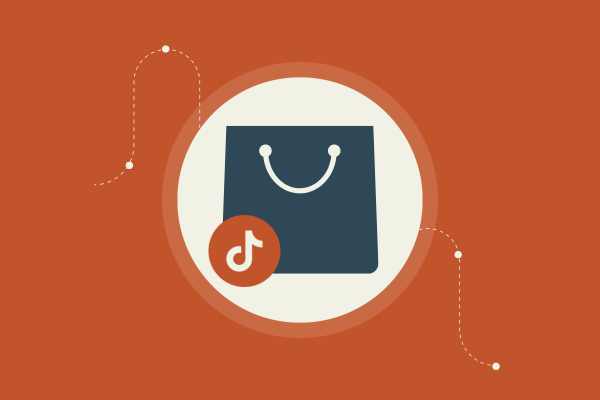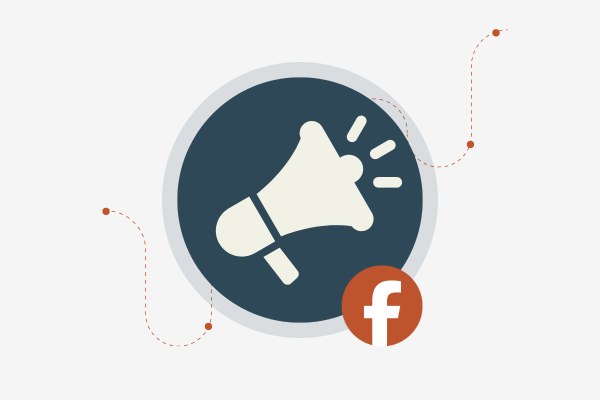Understanding Capital Intensity: eCommerce Success Blueprint
Ever feel like you're throwing money into a black hole running your eCommerce business? Understanding capital intensity is key to making smarter financial decisions. It's all about how much cash your business needs to generate a single dollar of revenue.
Knowing this helps you pinpoint where your money's actually going and how to use it better.
Think of your business as a car. If capital intensiveness is your fuel consumption, you need to know how far you can go with each tank.
Lower capital intensity means your business is using resources efficiently. High capital intensity? You're burning cash fast and need to find ways to optimize operational efficiency or increase revenue.
So why is this important for you? It affects everything from investment decisions to how you plan for growth. Knowing your numbers can help guide where to invest your time and money for maximum impact.
Key Takeaways
Capital intensity measures resource use in generating revenue.
Know your capital intensity to improve cash flow and efficiency.
Optimize based on numbers for better growth and sustainability.
What Is Capital Intensity and Why It Matters
Capital intensity is all about how much money you need to keep your business running. Think about this: do you need expensive machines, buildings, or equipment? That's capital intensity in a nutshell.
In a capital-intensive business, a lot of your money is tied up in these big-ticket items. For example, factories or heavy machinery. These are your fixed assets.
The ratio of fixed assets to your total assets gives you a sense of how intense your capital requirements are.
Why does this matter for your eCommerce business? Well, you need to know how much cash you'll have to keep investing. If you're selling software, the capital requirements might be low. If you’re manufacturing electronics, that's another story.
Remember, more capital means more money at risk. So, understanding your capital intensity helps you plan for future investments. Focus on where your dollars need to go and how quickly you can turn that investment into profit. Make wise choices and you could steer your business toward greater success.
Calculating Capital Intensity in eCommerce
Capital intensity determines how much money your business needs to grow. In e-commerce, calculating it involves understanding specific metrics and expenses linked to your online operations. Let’s dive into those key areas.
Understanding the Capital Intensity Ratio
The capital intensity ratio (CIR) tells you how much investment is needed for each dollar of revenue.
In e-commerce, a low CIR often means your business can generate more revenue with less investment in physical assets.
Calculate CIR by dividing your total average assets by your revenue during a specific period. For instance, if your assets total $500,000 and revenue is $2 million, your CIR is 0.25.
This ratio helps you see how efficiently you use your assets to create sales.
Knowing this, you can compare your CIR against your competitors to spot areas for improvement. This lets you streamline operations and boost profitability. Get the data from your financial statements regularly to keep an eye on it.
Capital Expenditures (Capex) in eCommerce
Capital expenditures are the funds you use to buy or upgrade physical assets. In e-commerce, these could include technology platforms or warehouse equipment.
Capex can be a big part of your budget, impacting your overall costs.
To manage this, prioritize spending on assets that directly increase your operational efficiency. Think about upgrading software that boosts your site speed or adds seamless payment options. Those are investments that pay off.
Keep track of your spending on Capex through detailed accounting records, helping ensure that every dollar pushes your growth forward. Clever use of Capex can reduce your capital intensity ratio over time, making your business leaner and more competitive.
Applying Depreciation in Financial Analysis
Depreciation spreads the cost of physical assets over their useful life.
For e-commerce, understanding depreciation helps in analyzing your business's financial health. It affects how much profit you report, impacting taxes and investment decisions.
For example, if you buy a server for $10,000 with a useful life of 5 years, you charge $2,000 yearly to depreciation.
This lowers your taxable income, giving a clearer picture of your real profits.
Including depreciation in your financial analysis can help you assess long-term performance and plan for future investments. Use it to better visualize asset usage and impact on your capital intensity.
The Intersection of Revenue and Capital Intensity
When running an eCommerce business, balancing revenue and capital intensity is key. It’s all about boosting profitability while keeping your capital working efficiently.
Maximizing Profitability While Managing Capital
Your goal is to squeeze as much profit as possible from every dollar spent. It's like a high-score game where you want every player, or in this case, every dollar, to be a top performer.
Focus on Return on Investment (ROI) metrics, which help see how your investments are paying off. If you can turn a $1 million investment into $1.5 million in profits, your profits are rolling at a solid 50% gain.
Profitability isn’t just about how much cash comes in—it's about keeping costs tight while expanding your revenue.
Smart tech upgrades or automation could cut down expenses and push profits higher, making each dollar work harder for you.
Capital Efficiency and Revenue Generation
Capital efficiency means doing more with less. It’s like being a superhero with your finances.
The capital intensity ratio helps determine how much spending is needed for each dollar of revenue. Lower ratios mean you're hitting the sweet spot, maximizing efficiency without sacrificing growth.
Keep an eye on your competition and market standards, and tweak your strategy to stay ahead. It’s also important to watch the balance between investments in assets and costs, ensuring you’re not overextending.
Efficiency helps boost revenue generation by making smarter decisions that lead to higher net income. In the end, it’s all about having a lean, mean, revenue-generating machine.
Investments and Cash Flow Considerations
You run an eCommerce business and need to make smart financial decisions. It’s all about balancing where your money goes and how it comes in. You have to juggle investments, cash flow, and ways to fund your journey to success.
Balancing Investments and Operating Cash Flow
Investments are crucial, but cash flow is king. You have to keep enough cash on hand to cover daily operations. If your cash flow is too tight, even the best investment can feel like a burden.
Invest in areas that bring back returns, like marketing or inventory, but don’t overdo it. Create a list of priorities. Understand the time it takes for returns to materialize.
It's not about quick wins, it's about sustained growth.
Track your cash flow regularly. Monitor it weekly. Use financial software to predict future cash needs.
Make better decisions to balance those investments with the operational cash flow. Prioritizing this balance will help keep your business afloat and growing strong.
The Role of Funding Rounds and Crowdfunding
Funding rounds can bring in big bucks. It's like a cash infusion. If you're scaling up, you might need these.
Crowdfunding is another beast and taps directly into your customer base. Show them why you're worth their money. It involves creating buzz and building trust.
Know when to go for a funding round. They can make or break your focus. Funding rounds often come with investors who want a say. Keep long-term goals in mind.
Crowdfunding is about selling your vision. Use platforms wisely. You get both cash and customer validation.
The investment you secure here can fuel product development or inventory boosts. Just rethink your pitches and address customer concerns effectively.
Whether opting for funding rounds or crowdfunding, choose what aligns best with your goals. It’s all about leveraging these tools to keep that cash flow healthy.
Impact of Marketing and Customer Acquisition
Marketing and customer acquisition play a big role in ecommerce success. They shape how much you spend to gain customers and how well you hold onto them. Understanding these factors can help boost profits and create a lasting edge over your competitors.
The Cost of Customer Loyalty and Retention
Customer acquisition costs (CAC) can eat up your budget if you're not careful. It's all about balancing the initial spend on marketing and retaining valued customers.
The math is simple. The more you spend to acquire, the better you need to keep them loyal.
When you get a customer, they should stick around. That’s where the customer lifetime value (CLV) kicks in.
CLV indicates the value a customer brings over time.
By increasing CLV, you spread acquisition costs over more time, making each customer relationship more profitable. Retention strategies like personalized emails, exclusive deals, and solid customer service are crucial.
Achieving a Competitive Advantage through Marketing
Marketing isn't just about flashy ads. It's a tool for carving out your spot in the market.
To gain a competitive advantage, you need a smart mix of tactics. Think about how your brand message stands out.
Engage your audience with creative content marketing and targeted advertising. Make sure you're speaking their language and meeting their needs.
Good marketing builds a strong identity and earns trust.
Keep an eye on trends. Adjust your strategies to address changing customer preferences and market conditions.
This agility in your marketing makes sure you're always one step ahead and maximizing your edge in the competitive ecommerce landscape.
Analyzing Financial Statements for Investment Decisions
You're stepping into investment decisions like a boss. But wait—picking the right investments? That's where financial statements come in. They tell you if a company's really knocking it out of the park. We're talking ROI, profit margins, and ROA—each one unlocks a different piece of the puzzle.
Leveraging Return on Investment (ROI)
ROI is like your investment scoreboard. It tells you how much bang you're getting for your buck.
You drop some cash into a business, and ROI shows you what comes back—plain and simple. High ROI? You might be onto something great.
Financial statements hold the secrets. Look at how revenue and profit compare to investment.
A 50% ROI means you're making $0.50 for every dollar you put in. You want to see the details here—expenses, revenue sources, and operational efficiency.
Don't glance past industry averages. They give context to the numbers. An ROI above the industry average? That's like hitting a home run. Below? Maybe you need to dive deeper. Be the investor who digs, not one who fumbles.
Evaluating Profit Margins and Return on Assets (ROA)
Profit margins are the juicy part of the financial pie. Net profit margin shows how much cash is left after all costs. Higher margins mean the company is keeping more from every sale and boosting its value.
Next up, ROA. It's about how efficiently a company uses its assets to make money.
Imagine turning every asset into dollars efficiently. High ROA means they make the most of what they own.
Financial statements reveal these insights. Check out the balance sheet for assets, and the income statement for profits.
Compare net profit margins with industry averages. Dig into operational efficiency, too. Are they managing assets wisely? That’s your golden data.
Analyzing these details gives you the power to make smart investment choices. So grab those financial statements and start unlocking these secrets yourself.
The Role of Debt and Equity in Capital Intensity
Navigating the eCommerce world means understanding how debt and equity play into your capital intensity. A good grasp of these can unlock growth and manage risks.
Understanding Financial Leverage and Its Risks
Financial leverage is like a double-edged sword. It means using debt to juice up your business growth.
When you borrow money, you're basically betting that your returns will outpace the interest you pay.
Now, that sounds slick, right? Here's the kicker—too much debt can strangle your business. Interest payments don't stop when sales slow down. This can lead to a cash crunch, which nobody wants.
Balance is everything. The right amount of leverage can boost your growth without sinking your business.
Watch your debt levels and think of them like spice. A little can make things nice, but too much and you’ll be regretting it.
Equity and Capital Structure in eCommerce
Equity is the other side of the coin. It’s about owning more of the business outright.
This can be a great way to raise funds without taking on debt. When you bring in new shareholders, you share both the ownership and the risk.
In eCommerce, having a solid capital structure is crucial. A mix of debt and equity can provide stability. Too much equity might mean you’re giving up control of your company.
Think of your capital structure like a pizza. You want a good mix of toppings (debt and equity) to make it tasty and strong.
Find what blend works best for you and be adaptable. The key is growth without losing your shirt or your sanity.
Sustainability and Growth in Capital-Intensive eCommerce
When you're running an eCommerce business, focusing on both sustainability and growth can feel like juggling flaming swords. The way you manage your capital can either set you up for booming success or leave you hitting the brakes. Let's tackle how to balance these aspects.
Long-Term Capital Allocation for Growth Potential
Thinking long-term with your capital isn't just for Wall Street bigwigs. It's crucial for eCommerce players, too.
Allocate funds strategically to tech, logistics, and customer service. These areas pack a punch in scaling your operations.
Take inspiration from Coupang's pivot to logistics. They shifted gears towards integrated logistics, which fueled growth and captured market share.
Capitalize on automation to enhance efficiency. Automate warehouse operations, customer support, and marketing campaigns.
Saves time, saves money, and keeps you competitive. Keep an eye on new tech to stay ahead. If you snooze, you lose.
Incorporating Sustainability in Business Strategies
Sustainability is crucial in eCommerce. Consumers demand it, and it's smart business. Infuse sustainability into your strategies to boost your brand and attract eco-conscious buyers.
Start by reducing your carbon footprint. Use eco-friendly packaging, and partner with green delivery firms to meet consumer expectations for responsible business practices. Such steps make a difference.
Embrace digitalization, which can streamline operations and reduce waste. By adopting digital solutions, you create more sustainable processes and improve value creation.
Leverage these methods to position yourself as a leader in green business. It's not just a trend; it's a movement. Be part of it.
Managing Inventory and Operational Efficiency
To boost your eCommerce business, it's crucial to manage your inventory smartly and use performance metrics to improve operations. Focusing on these elements ensures that your store not only keeps up with demand but also maximizes its profit margins by using its resources effectively.
Working Capital and eCommerce Inventory Management
Working capital is your business's lifeline. It's what keeps the lights on and lets you buy more stock. In eCommerce, where sales channels can fluctuate wildly, knowing how much working capital you have is essential for effective inventory management.
You want just enough inventory: not too much that it ties up your cash, and not too little that you miss sales. Streamlined inventory management needs precise forecasting. This involves understanding sales trends to predict future needs accurately. Having easy access to working capital means you can adjust to changes, whether those changes are seasonal peaks, new product launches, or unforeseen spikes in demand.
It's also smart to automate where you can. The use of software tools can help track inventory levels in real-time, reducing human error. If you're using tech to manage your stock, you can improve turnover rates and free up cash for other pressing needs. Invest in robust systems that provide real-time insights for better decision-making.
Using Key Performance Indicators (KPIs) to Boost Efficiency
Key Performance Indicators are not just metrics; they show if you're winning or losing. They tell you what to focus on. The right KPIs make a big difference in tracking operational efficiency for an eCommerce business. Sales revenue per employee, inventory turnover, and order accuracy rates are crucial when measuring success.
Focusing on KPIs can pinpoint inefficiencies in your operations. For example, a low inventory turnover might indicate overstocking, which ties up working capital. Meanwhile, a high order accuracy rate ensures satisfied customers who are likely to return.
Regularly review these KPIs and adapt. If something isn't trending the way you want, adjust your strategy. Maybe it means streamlining your supply chain or updating your inventory software. Use KPIs to guide changes and ensure your operations are as efficient as possible. Turn data into action. That's how you stay ahead.
Lastly, make sure your team knows these KPIs. Share these numbers regularly and celebrate wins, no matter how small. Every percentage point you improve your efficiency is cash in your pocket.
Leveraging Industry Benchmarks and Market Trends
You want to maximize your capital use and crush it in eCommerce. Knowing where your business stands against industry averages and adapting to market conditions can help you make smarter decisions. This section guides you through analyzing key metrics and adjusting your strategy based on the latest trends.
Analyzing Industry Averages to Inform Strategy
So, you're diving into the numbers, right? Industry averages are like the cheat sheet for your business. They show you what’s the norm in capital-intensive industries, helping you see where you’re shining or falling short. Your goal is to measure up!
Look at the capital intensity ratio. How does your product portfolio stack up against these benchmarks? You might find that you're investing too much or too little compared to others. This insight helps you tweak your capital allocation, ensuring it works efficiently.
To stay competitive, compare your market share to industry averages. This tells you if you're grabbing as much of the pie as you should. Stay sharp and keep these metrics in your back pocket. They will direct you when forming your game plan.
Adapting to Market Conditions for Optimal Capital Use
The market is a wild beast. It changes, and you’ve got to move with it!
Keep an eye on market conditions that affect your capital use. Trends like new technology or sudden demand shifts can flip the script.
Be proactive. If a trend points to more efficient production, adjust your strategy.
This could mean investing in new tech or restructuring your product portfolio. The goal is to use your capital more wisely than your competitors.
Reacting to market changes also means knowing when to hold back. There are times to invest aggressively and times to tighten the belt.
Watch the trends, understand the conditions, and pivot your approach for optimal capital use. That’s how you stay ahead.







